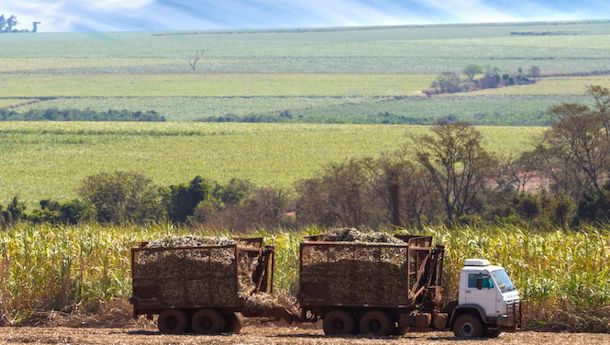The world's major sugar producers recently got a bitter surprise. In October, the European Union lifted restrictions on its sugar production that had been in place to keep prices stable since 1968. The European Commission estimates that the bloc's annual sugar imports will fall from 3 million metric tons (3.3 million tons) to 1.8 million metric tons by 2025. European sugar exports, meanwhile, will nearly double from 1.3 million metric tons per year, where they have been capped for half a century. The end of the EU production quota, coupled with the bloc's enduring tariffs on imported sugar, will force traditional sugar exporters in Latin America and the Caribbean to look for ways to deal with the heightened competition.
If You Can't Eat It, Burn It
For Brazil, the world's largest sugar exporter, the solution may lie in ethanol. The European Union isn't the main market for Brazilian sugar. Nevertheless, its decision to ramp up sugar production could impede the South American country's efforts to boost exports to the bloc and erode its market share in places like Africa, which imported nearly $3 billion worth of sugar from Brazil last year. The growth in EU sugar production, moreover, could cause sugar prices — down more than 20 percent this year — to drop further. Should the decline continue, Brazil's ethanol industry can absorb part of the country's sugarcane production, as it has in the past when the price of refined sugar was down.

The Brazilian government has been taking steps to bolster its ethanol industry over the past two decades. Vehicles manufactured in Brazil since 2003 come equipped with flex-fuel engines that can run on a blend of gasoline and ethanol, and lawmakers have gradually increased the proportion of ethanol in blended fuels to 25 percent. In addition, the lower house of the country's National Congress approved a bill in November that aims to reduce carbon emissions in accordance with the Paris Agreement by requiring fuel distributors to rely more heavily on ethanol and biodiesel. (Private consulting company Datagro believes the legislation could drive production of these alternative fuels from 27 billion liters per year in Brazil to 40 billion liters annually by 2030.) The government also has implemented measures to make ethanol more competitive, for instance by taxing the import and sale of gasoline. Brasilia's efforts could enable the Brazilian sugar industry to maintain its edge as the European Union tries to increase its share of the international market.
Like Brazil, Mexico is betting on the growth of its ethanol industry. The country's state-owned energy company, Petroleos Mexicanos, has been buying ethanol blend gasoline since 2015, though Mexico's ethanol consumption pales in comparison with that of Brazil, and it plans to start purchasing fuel with a higher ethanol content. Still, relative to Brazil, Mexico has less cause to worry about its sugar industry. The country, after all, exports far less of the commodity as the world's fifth-largest exporter. What's more, its geographic proximity to and free trade agreement with the United States gives Mexico an advantage over the European Union in the U.S. sugar market. Sugar, in fact, is one point in the negotiations to revise the North American Free Trade Agreement over which Mexico City and Washington have agreed. As competition heats up in the international sugar market in the coming years, Mexico will try to preserve its privileged access to the U.S. consumers.
Keeping Out the Competition
Argentina, on the other hand, will look to protectionism to see its sugar industry through. Because the country's sugar production occurs mainly in its poorer northern provinces, the Argentine government is reluctant to open up the industry to foreign competitors, even as President Mauricio Macri has pushed to liberalize Argentina's economy. The economic and social risks for the sugar-producing provinces would be too great. For that reason, Argentina — which exports only around 10 percent of the roughly 2.2 million metric tons of sugar it produces yearly — maintains an 18 percent tariff on imported sugar, along with another tariff that fluctuates with global sugar prices. Buenos Aires refuses to even discuss establishing sugar import quotas with its fellow members in the Common Market of the South (Mercosur). The issue has become a sticking point in Mercosur's trade negotiations with the European Union, as well.
Despite pressure from Brazil to lower its trade barriers around sugar, Argentina probably will keep its import restrictions in place as more European sugar hits the market. It also plans to boost ethanol production from sugarcane by upping the required amount of ethanol in its blended gasoline from 12 percent to 25 percent. The Argentine ethanol industry, however, is in its infancy: Buenos Aires has yet to approve any ethanol-burning engine technology for the domestic market, even though the country's automotive industry produces engines with flex-fuel capabiliites for export. Consequently, the government will continue to rely on trade barriers to shield Argentine sugar producers from external competition.
And the 15 countries of the Caribbean Community (CARICOM) trade bloc will follow suit. Caribbean producers stand to take a big hit as the European Union works to become a net sugar exporter; last year, over 60 percent of CARICOM's sugar exports went to the Continental bloc. Even before Brussels lifted its production quota, the European Union's demand for CARICOM sugar was starting to decline, falling by nearly 40 percent in 2016. For CARICOM members, some of which already have unemployment rates in the double digits, the trend bodes ill for their economic futures.

To cope with its dwindling exports and the recent dip in sugar prices, CARICOM has entertained a variety of solutions. One proposal, floated by the bloc's Council for Trade and Economic Development last month in Guyana, suggested a 40 percent common external tariff for all sugar imported from outside the trade area. The measure aims to enable CARICOM's four main sugar exporters — Jamaica, Guyana, Belize and Barbados — to shift their production to meet demand within the bloc.
Elsewhere in the Caribbean, the EU decision to lift the sugar production cap will make less of a splash. Cuba, another major sugar exporter in the region (though not a member of CARICOM), has been steadily losing ground in the market since the fall of the Soviet Union, historically its biggest customer. The island nation produced less than 2 million metric tons of sugar last year, compared with an annual 8 million metric tons throughout the 1970s. Furthermore, it sends more than half its sugar exports to China and Russia, meaning that the end of the EU production restrictions pose less of a threat to the Cuban sugar industry.
Yet for most sugar producers in Latin America and the Caribbean, the prospect of a new competitor vying for market share spells a change on the horizon. Countries such as Argentina and CARICOM's members will respond by maintaining or raising import tariffs to try to protect their domestic markets and avoid job losses. States such as Brazil, by contrast, will divert more of their sugar production activities to support their burgeoning ethanol industries.






